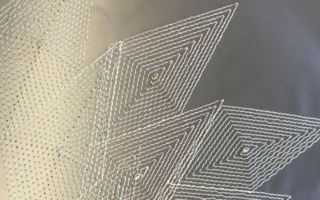06/10/2016 – Kelheim Fibres
A static dissipative viscose fibre
By developing a viscose fibre which provides static dissipation, Kelheim Fibres broadens its already comprehensive range of speciality viscose fibres.
The black fibre receives its specific properties by the incorporation of electrically conductive additives into the fibre’s core. As a result, the functional additives are evenly distributed in the whole fibre, while at the same time the typical properties of the viscose fibre - as for example its high absorbency - are preserved.
First tests with these fibres that have been successfully produced on a laboratory scale have shown a significant increase of the fibres’ electrical conductivity in comparison to a standard viscose fibre.
Depending on requirements, Kelheim fibres can produce fibres in the middle conductivity range from about 10-4 S/m to 0,1 S/m.
The functionalized fibre could be used in protective work wear for electrostatic discharge, for the protection of electronic components or humans.
Used as humidity sensor – wherever an immediate detection of moisture is required - this dissipative fibre offers a significant advantage.
Here, the fibres could be used in completely different applications: in bed pads for the health and care sector as well as in roof linings that detect possible leakages.
When the fibres absorb moisture, they swell, which leads to a decrease of their electric conductivity.
When water is stored in the fibre’s matrix, the conductive pathways of the additives are interrupted. The change in conductivity depending on the fibre’s moisture is reversible.
Customers will decide the next step of the journey of the static dissipative fibre. Dr. Nina Köhne, R&D project manager at Kelheim Fibres: “This topic is as fascinating as it is wide – up until now, we have created a strong foundation. Depending on the market’s requirements, the future way of the functionalized fibre can lead in different directions. From now on it is important to follow the specific demands of our customers and of different applications in the further development of the fibre.”




